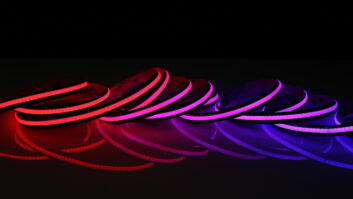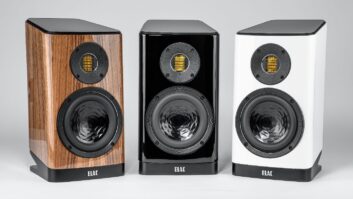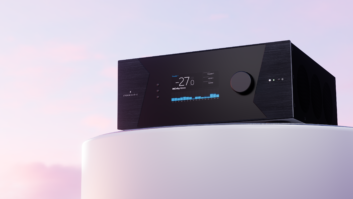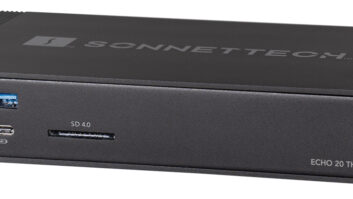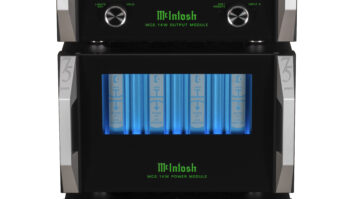When I was a wee lad of six or seven years, the family TV in the den went kerflooey, and my dad upgraded us to a positively gigantic 27-inch console television, complete with a remote control, which alleviated one of my many jobs around the house. this was, of course, back in the day when you didn’t carry your own TV home and set it up. A technician delivered it and plugged it in, and before he could get my dad’s signature on all the deliver papers and get out the side door, I had the back panel of the TV off and was exploring its interior. that’s just the kind of kid I was.
This newfangled contraption perplexed me, though, and as the delivery guy was sneaking out the door, I yelled out, “Wait! They forgot to put the tubes in it!” My dad turned scarlet. My mom left the room. But the delivery guy smiled and said, “These new TVs don’t have tubes in ’em, son.”
“But how am I supposed to fix it when it breaks?” I hollered out in dismay.

If you haven’t dealt with a tube amp in a while, setting up a Black Magic 20 is a wholly different experience than setting up a solid-state amp.I pass along that anecdote because, for all practical purposes, when that delivery guy carted off our old and broken TV, that was pretty much the end of my real, long-term relationship with vacuum tubes. I’ve heard my fair share of hi-fi tube amps through the years, but I haven’t really lived with them. Not until Bob Carver’s VTA20S Black Magic 20-Watt Amplifier showed up on my doorstep.
Before we dig into the sound of the Black Magic 20, let’s talk a bit about aesthetics and setup, because if you haven’t dealt with a tube amp in a while, it’s a wholly different experience than setting up a solid-state amp. The four tubes, for example, don’t come installed. You have to plug them in yourself.
And really, that’s the extent of it. The tubes aren’t matched. You don’t have to do any biasing yourself. Plug the right tubes (12AX7Bs for the input stage, EL84Ms for the output stage) plug in the power cord, attach the speaker wire of your choice (Straight Wire Encore II in my case) to the unbelievably gorgeous binding posts, fire it up, and the Black Magic 20 is ready to make beautiful music.
And what beautiful music it makes. I started off on a lark with a pair of MartinLogan Purity electrostats, because those are the speakers I intend to build my two-channel system in my office around, and I have to admit to being a little underwhelmed by the sound at first. My gut reaction was to chalk this up to ESLs being traditionally harder to drive, but that doesn’t make sense, given that the Purity is a pretty efficient speaker, and its specs indicated that 20 watts are enough to drive it. I won’t try to explain it, but the sound wasn’t to my satisfaction.
I figured perhaps a smaller bookshelf speaker was more the Black Magic 20’s speed, so I connected a pair of SnapAV 700 Series Monitors, plugged my turntable straight in (a note on that in a moment), and bathed in the delicious analog-ness of Greg Laswell’s Landline on vinyl. Yes, I’ve admitted time and again that I’m very much a digital audiophile, and I still very much lean in that direction, but there’s something about dropping a piece of vinyl on a record player that connects the listener with the music in a tangible way, and the Black Magic 20 very much heightens that. The glow of the tubes. The simplicity of construction. The lack of digital display.
The thing is, this doesn’t really sound like any tube amp I’ve ever heard. A lot of the distortion that we often describe as “tube warmth” is subdued here. It’s an incredibly quiet amp, and a lot of the analogness comes through in an incredibly detailed sound that isn’t dry and analytical. It’s sweet without being cloying, and without ever masking the nuances of the recording. It also gives a wonderful depth and dimensionality to the sound. Music isn’t a thing that’s happening over there in the speakers, but out here, in the room.
Just for giggles, I also hooked up the MartinLogan Motion 40 towers that I’m reviewing in the den, and was shocked at how hard the Black Magic 20 rocked them. Forget the numbers. The Motion 40 may be rated at 300 watts apiece, but this little overachiever drove them with plenty of headroom, specs be damned. Granted, bass wasn’t quite as oomphy as I’m used to hearing from the Motion 40s via the Anthem D2v and A5 amp in the den, but it’s a different kind of bass–not as strong, sure, but more deft and nimble. Not better or worse, but as I said: different.
And although, as I said, the Black Magic 20 can be used without a preamp, owing to its built-in volume knob (an analog potentiometer, by the way, so if you’re used to the ultra-smoothness and consistency of modern volume knobs, give yourself a bit of time to get used to it), it does sound better when cranked. So if you prefer lower listening levels, a preamp may be in order. That’s especially true if you want to use multiple sources. I disconnected the turntable, though, and hooked up my Autonomic MMS-2 Mirage Media Server, because that’s where most of my music comes from, and I love the way the Black Magic 50 sweetens even the–gasp, I know–mp3s in my collection. Not, perhaps, as transformative as the effect of the PSAudio PerfectWave DAC I reviewed a while back, but in a different way, it’s still an effect I very much like.
Really, though, what I like best about the Black Magic 20 is not only the tactile qualities of the amp itself, but also the subtle tangibilities it imparts to the sound. I also love that, should one of the tubes blow, the end user (or you the installer) could easily replace one or all with a few tugs and a satisfying push. It puts you in touch with the music in an unquantifiable way. And in a way, it puts me back in touch with my rascally childhood. That may be an effect you can’t measure, but, as the Black Magic 20 demonstrates, measurements aren’t everything.
859.258.9794
www.bobcarver.com
Kudos
Bob Carver’s VTA20S Black Magic 20 Watt Amplifier is an incredibly simple, beautifully performing tube amp from one of the industry’s true legends. it delivers the richness and tactile qualities that tube amp aficionados love, without so many of the quirks.
Concerns
At $2,100, this 20-wattper- channel stereo amp might be a hard sale for customers who aren’t familiar with bob carver’s status in the industry. I’m not saying it’s not worth it; I’m merely saying that it’s not what you’d call a budget amplifier.
Product Specs
• Number of Line Inputs: 1
• Input impedance: 100 k ohms
• Input Stage: 2x 12AX7b current sourced low noise valve
• Output Stage Configuration: 1 complementary set of El84ms per channel
• Output tube plate voltage: 408v
• Output Tube Idle Power: 10.6W
• Rated Power: 20 watts per channel in stereo or 40 watts in mono
• Warranty: Amps 7 Years, Tubes 1 Year
